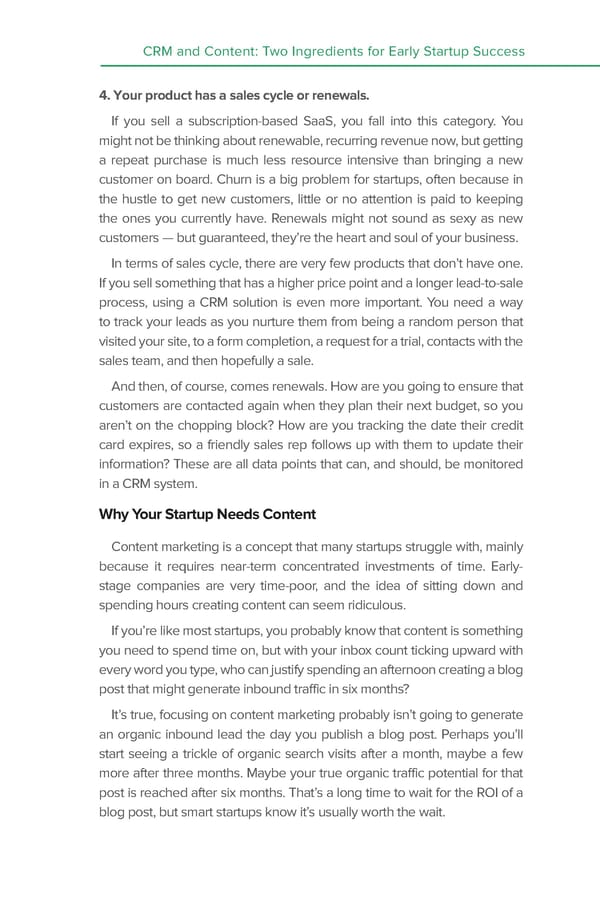Chapter 9 CRM and Content: Two Ingredients for Early Startup Success 4. Your product has a sales cycle or renewals. If you sell a subscription-based SaaS, you fall into this category. You might not be thinking about renewable, recurring revenue now, but getting a repeat purchase is much less resource intensive than bringing a new customer on board. Churn is a big problem for startups, often because in the hustle to get new customers, little or no attention is paid to keeping the ones you currently have. Renewals might not sound as sexy as new customers — but guaranteed, they’re the heart and soul of your business. In terms of sales cycle, there are very few products that don’t have one. If you sell something that has a higher price point and a longer lead-to-sale process, using a CRM solution is even more important. You need a way to track your leads as you nurture them from being a random person that visited your site, to a form completion, a request for a trial, contacts with the sales team, and then hopefully a sale. And then, of course, comes renewals. How are you going to ensure that customers are contacted again when they plan their next budget, so you aren’t on the chopping block? How are you tracking the date their credit card expires, so a friendly sales rep follows up with them to update their information? These are all data points that can, and should, be monitored in a CRM system. Why Your Startup Needs Content Content marketing is a concept that many startups struggle with, mainly because it requires near-term concentrated investments of time. Early- stage companies are very time-poor, and the idea of sitting down and spending hours creating content can seem ridiculous. If you’re like most startups, you probably know that content is something you need to spend time on, but with your inbox count ticking upward with every word you type, who can justify spending an afternoon creating a blog post that might generate inbound traffic in six months? It’s true, focusing on content marketing probably isn’t going to generate an organic inbound lead the day you publish a blog post. Perhaps you’ll start seeing a trickle of organic search visits after a month, maybe a few more after three months. Maybe your true organic traffic potential for that post is reached after six months. That’s a long time to wait for the ROI of a blog post, but smart startups know it’s usually worth the wait.
 CRM and Content Page 4 Page 6
CRM and Content Page 4 Page 6